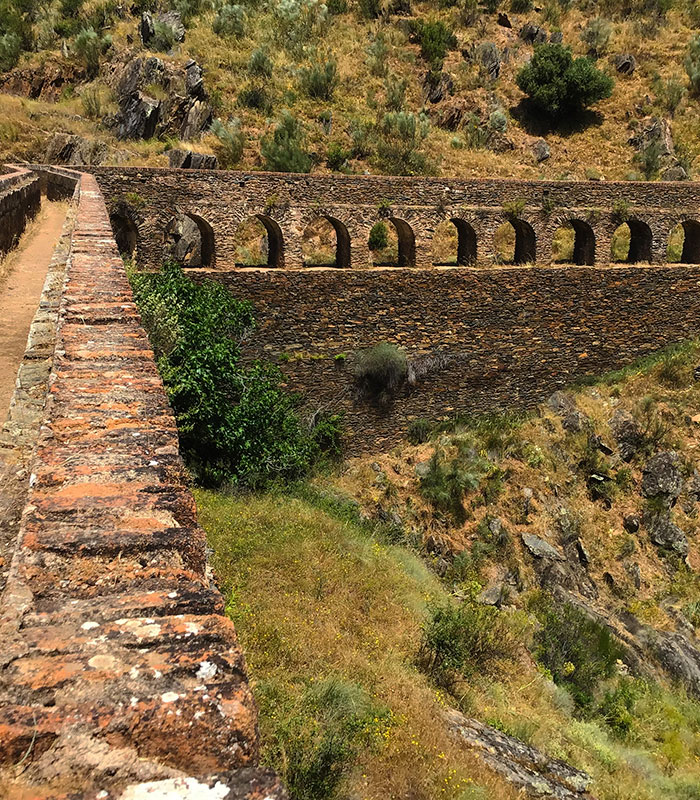This tremendous work of hydraulic engineering in the valley of the River Descuernacabras in the vicinity of Campillo de Deleitosa, hidden in the heart of the Villuercas-Ibores-Jara Global Geopark of the UNESCO, is one of the treasures of this territory. In its objective of transferring a stream of water over the uneven landscape it reaches an unusual grandness despite the fact that it is part of the least known heritage of Extremadura.
The Acueducto de las Herrerías is an ancient hydraulic infrastructure which was designed to provide a smithy (herrería) of Campillo de Deleitosa with energy. Subsequently it would be used also to supply three small electric power stations. In fact the aqueduct is only part of a larger infrastructure which consists of a canal seven kilometres long and its associated structures. This canal starts from a dam built where the three streams of Los Batanes, El Colmenar, and Los Torneros come together. At this strategic point the water is collected and transported by means of the canal which runs along the rugged hillside of the River Descuernacabras.
The route adapts itself to the contours of the terrain so at to maintain unalterable the angle which allows the constant movement of the water. The whole of the canal is filled with mortar so as to avoid leaks and continues to be in a very good state of repair.
However, the structure comes into its own and is at its most spectacular when it overcomes the descents to the stream with some twenty arches and a great wall which make up an aqueduct eight metres high. It is impressive to contemplate the grandness of this work of engineering, its masterly construction, and the perfection of its design. It is made of slate and mortar as is the whole of the channelling and the aforementioned dam, although the upper part of the canal is finished in brick.

